A Parent's Guide
1
Preface
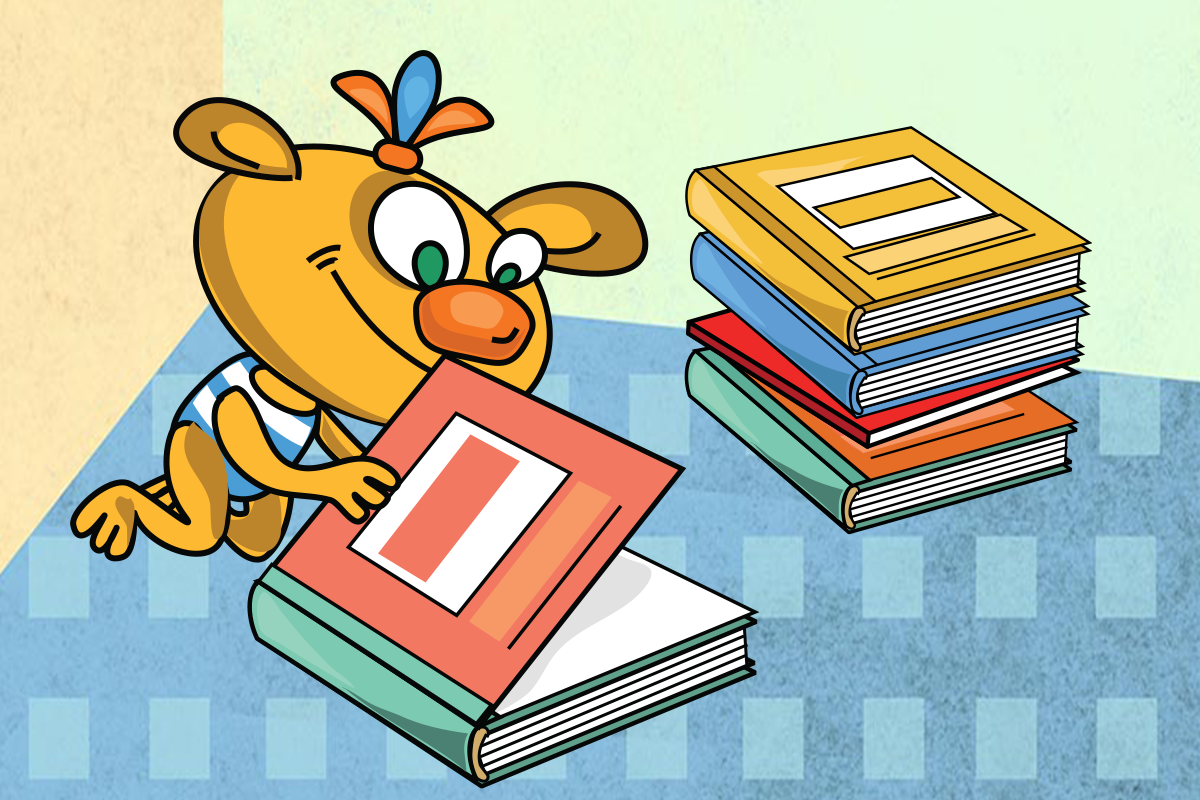
Dear parents,
Many languages are spoken worldwide, in your country, your neighbourhood, and perhaps also within your family. The language(s) used in kindergarten or school may differ from the one(s) spoken at home.
You may be unsure if you stress your child when you provide access to more languages than the language(s) spoken at home. Maybe you have questions about supporting your child in becoming a competent speaker in all the languages necessary to communicate within your family, the neighbourhood, kindergarten, and school. You may have questions about when to start bringing more than one language into your family or, if at all. You may even consider it a disadvantage for your child later on if they have to deal with more languages than the language used in school.
As you can imagine, there are many ideas and worries regarding multilingual upbringing. Parents frequently ask themselves what the potential advantages or disadvantages are regarding their child's success in school and later on in their professional life.
The role of (kindergarten) teachers and parents in this regard is also a topic of public discussion. (Kindergarten) teachers can support the child with an appreciative attitude towards all languages. No language should be considered and treated as more valuable, important, beautiful, or useful than another. All languages are valuable and beautiful! Furthermore, (kindergarten) teachers can use a lot of situations to speak with the children so that the language needed for school can evolve. As a parent, you can also support your child to understand, speak, and write the languages important to you and your child in your living context. Be proud of it!
Cooperation partners from different countries (Austria, Germany, Lithuania, Poland, and Slovenia) have joined their expertise in an Erasmus+-funded project to support you and your child regarding a multilingual upbringing. Therefore, we will introduce knowledge about the challenges, especially the chances of learning different languages. We will show you various ways to actively support your child on its way into our multilingual surroundings. We will also focus on broadening the child's knowledge of the basic language skills needed (e.g., words and expressions) of the language used in school before entering the school system.

We will base our approach on computer-assisted language learning (CALL). For this purpose, we have prepared the app "Dandelin Goes to School" for learning and training words and expressions that children need when entering school. The app is designed for 4-8-year-old kids and is free to download.
The app helps to support the learning process playfully, keeping the child motivated and curious. Simultaneously, you as a parent may also profit from exposure to the language used in school while following the proposed activities with your child (see Chapter 6 for the benefits of CALL in detail). Additionally, these guidelines include methods and activities for your child to get involved from early on with the language used in school. In addition, we will support you regarding the maintenance and empowerment of your language(s) spoken at home throughout these guidelines.
The following chapters will introduce you to some basic knowledge regarding language acquisition, multilingualism, and the benefits of computer-assisted language learning (CALL). They will include essential facts, some examples, some questions to reflect upon at home, and some proposals for activities you could pursue with your child to support both the language used in school and the language(s) spoken at home.
In the literature on the development of bi- or multilingualism, many terms refer to the language(s) spoken within families and the language used when entering school. Language(s) spoken within families, for example, have been referred to as mother tongue, language of heritage, or family language(s) and also as language(s) spoken at home. Depending on which language is acquired first, even more technical terms, such as L1 (language 1) and L2 (language 2), might be used. In the following chapters, we will use the terms "family language" and "school language." These terms differentiate the language(s) you speak with family and friends from the language you need when entering the educational system in the country you live in. Sometimes, it can be the same language, but for many bi-/multilinguals, we can assume that the language(s) spoken at home differ from the language the child will need at school. We are aware that several languages may be spoken at home and in school. However, to make reading these guidelines easier for you, we will use the singular form of "family language" and "school language" for either one or multiple languages from now on.
We hope you enjoy the reading!
2
Do you have questions on how your child acquires language with your support?
Why do we acquire a language?
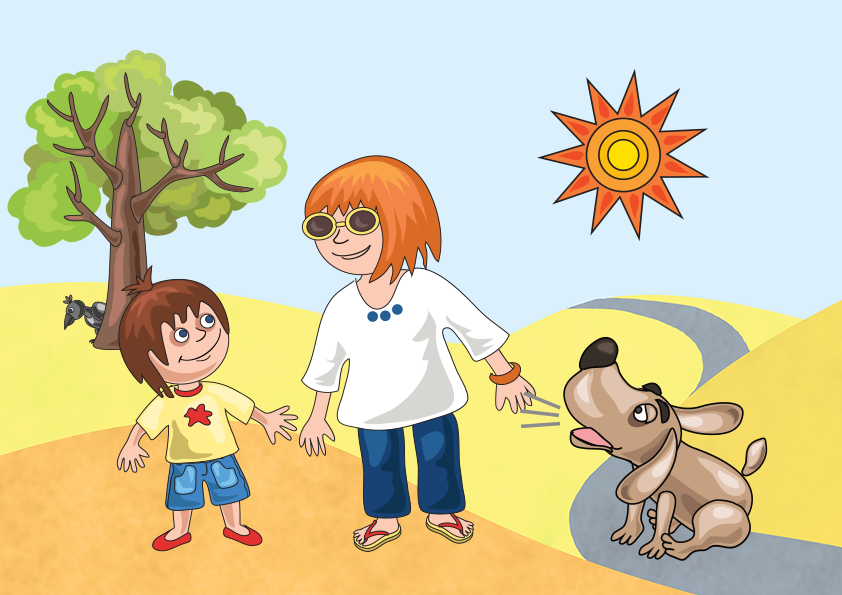
Thousands of languages and dialects have evolved over time and are currently spoken worldwide. With the help of languages, people can connect, share ideas, emotions, attitudes, conventions, and values, and build up societies. The context we grow up and live in shapes our values. Furthermore, it also shapes our language skills and vocabulary in all the languages we are familiar with (the so-called linguistic repertoire). The context also shapes how we speak, thus our cultural and language identity, and makes us who we are. Acquiring a language and later learning a language, e.g., in school, helps us connect to people "speaking the same language" as we do. For children, these people are their family, their friends, and later on, people in kindergarten, school, and professional contexts. They need to connect to all these groups. They need to express and share their experiences, ideas, and emotions with these groups.
How do we acquire or learn languages?
Our ability to acquire language(s) is innate. Children are typically amazingly keen and curious about acquiring and using language(s). Every child is capable of acquiring any language, even if many motoric and sensory prerequisites must be fulfilled (like lung function, hearing, mastering of vocal cord vibration, etc.).
Parents don't teach their family language to their children as one would learn a language in school. Typically, children acquire language(s) intuitively through significant authentic conversations in everyday, day-to-day contexts. They acquire their first language(s) by getting a lot of (non)verbal cues and imitating them as soon as they are physically capable. Children want to interact and do so as early as possible. However, to acquire a language, they must listen to and speak a lot with their family, the kindergarten teachers, neighbours, etc.

Children follow a step-by-step inner guide to language acquisition, with essential steps that are accomplished in the process of language comprehension and production. They learn the rules and the grammar "by doing". At about the age of 4-5, they can be considered to have reasonably acquired all language components (from words to grammar to typical expressions and how to pronounce and use language). This is the case as long as no physical or mental impairments hinder the process.
However, no child acquires language at the same pace as any other child. There are a lot of individual differences linked to language acquisition, which makes it hard to say at what point a child should have reached a certain step in the language acquisition process. In addition, this process never ends. There is always something new to learn, and children are highly motivated to explore new information and become more competent in the family and school languages. Children are eager to produce more complex sentences and understand the underlying meaning of words, sentences, humour, irony, etc.
Language Development
Summary: Every child acquires language at a different pace. Nevertheless, some steps in the language acquisition process are usually followed by children worldwide.
There is an innate sensibility to the characteristics and use of language(s):
Newborns worldwide are capable of recognising the melody of the language (so-called prosody) they hear regularly when still in their mother's belly. They can distinguish this prosody from unfamiliar prosodies.
Even when newborns cry, they imitate the melody of the language they are most familiar with.
Infants are universal listeners: They can distinguish even the smallest meaningful phonetic unit (so-called phoneme) in every language. But they lose this ability and specialise in the languages they are familiar with before they are one year old.
Babies coo, vocalise and bring consonants and vowels to syllables together (the so-called first and second babble phase). They explore language in any possible way, even before comprehending and producing single words.
Word comprehension and production:
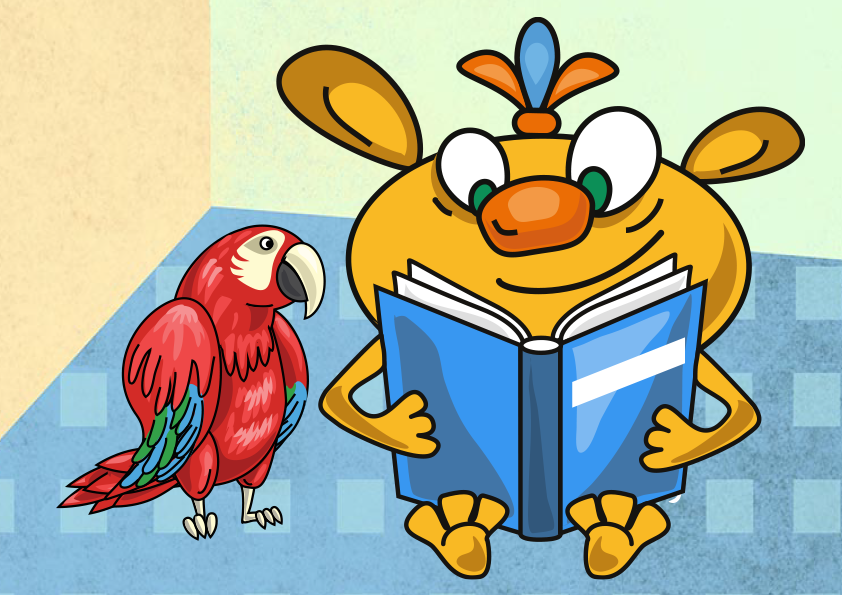
Comprehending words comes first, followed by producing words.
At the beginning of word production, "one-word sentences" are common. For example, a child would point at a ball and say, "Ball," which could mean different things, like "There is a ball" or "Let's play with that ball."
The number of words and expressions a child knows and can use is called the "lexicon." The first 50 words are acquired at a slower pace; afterwards, they grow considerably and fast. That is why this phase is also called word explosion.
The production of "two-word sentences" and "three-word sentences" follows. This is accompanied by a growing understanding of grammar and how words are arranged to build up correct sentences (the so-called syntax) in the specific language. A child typically refers to playing with a ball then as "Ball play." or "Mum play ball.". The grammar and syntax may still not be correct, but at this point, parents should not worry. It is normal for the child to playfully explore the rules of language(s). It will take time, but most of the children enjoy playing with words, with correct and incorrect forms, to make themselves understood. Parents can support their child by providing many opportunities for the child to participate in meaningful conversations that aim at the child's or joint interests (see later on in this chapter the section "how to support.").
Simple clauses and additional information that complete the simple clause (so-called main clauses and subordinate clauses) are mastered at about 4-5 years old. At this point, a child would, e.g., say, "Mum is playing ball with me today, and Dad will join us later." (main clause + and + main clause) or "Mum can't play ball with me today because she has to work." (main clause + subordinate clause). In both cases, the second part of the sentence involves some additional information explaining what will happen next or why something happens. At this age, children develop more and more an understanding of what "earlier," "later," "tomorrow," "yesterday," etc., mean. They also develop an understanding of the reasons and consequences for things that happened, happen or will happen. They express their growing understanding of the world by using more complex sentences and expressions.
With time, children also master the more complex language characteristics, like irony, humour, or different meanings of the same word, etc. They will start to tell jokes that may, at the beginning, not sound funny to you as a parent. However, these are steps towards developing a sense of humour, leading to more elaborate jokes and anecdotes with time.
How can language acquisition be supported?
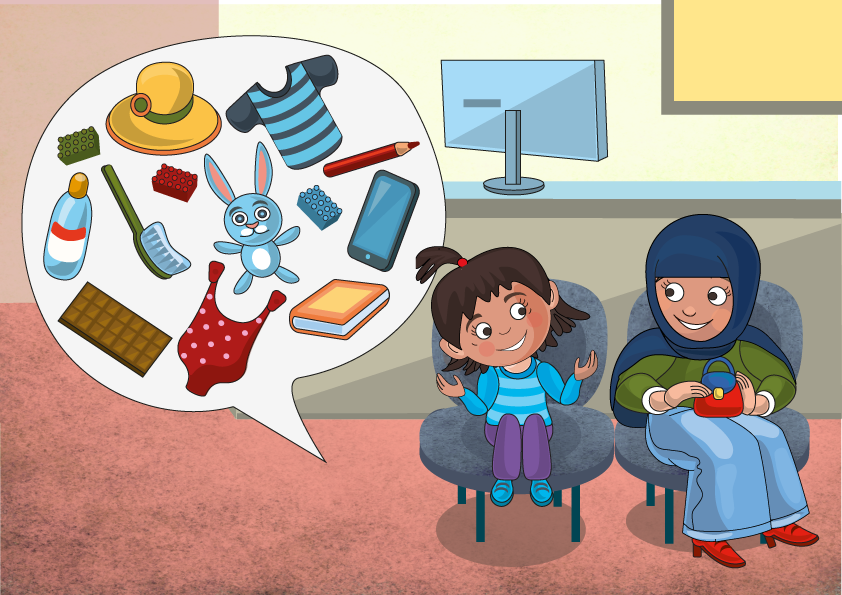
The only support children usually need is a lot of opportunities to communicate about different topics with parents, siblings, peers, teachers, etc. Everyone may serve as a language role model. However, the first ones are typically found within the family as children spend most of their time in their first years within the families with the people who are most important to them.
As a parent, you contribute a lot to the so-called immersion into language(s). This means that you can help your child master and become a competent speaker through daily and continuous exposure to the family language and the school language.
The more you speak about different topics with your child - using different words and expressions or the same words in various ways - the more words your child will learn intuitively with time. It will help your child build a so-called rich vocabulary (= all the single words and expressions a person knows together). The more you accompany your actions with matching words (e.g. While watering the flowers, you can say, "I am watering the flowers. They need water."), the more you repeat the child's contributions correctly (e.g. the child says, "Mum, play with the ball." You can say: "You are right. Mum plays with the ball. Do you want the ball?"), the more you help your child to enlarge his vocabulary. By the way, you even correct grammatical mistakes. The more that parents support this language acquisition by repeating the correct forms within conversations with the child or asking open questions to invite the child to form new sentences (e.g., "What is Dad doing right now?”), the more the child can benefit from the interaction.
The more frequently a child hears correct forms of words and expressions and may participate in a conversation - which includes more than a yes or no answer from the child - the easier the child understands when to use which form or expression. The more you include playful ways to shape conversations (e.g., with songs, rhymes, dialogic reading, etc.) or join in with your child's playful ways of interacting, the more the child will stay interested and eager to communicate. In addition, your child will be exposed in this way to more grammar structures and will quickly learn the rules necessary to become a competent speaker. A rich vocabulary, the mastery of grammar, and specific language rules are essential for a successful school career later on.
Therefore, in a conversation with your child, it matters a lot how much you say, what you say, and how you say something. How well you listen and interact with your child also matters a lot. Your input and attitude influence the child's wish to contribute to a conversation!
Questions to think about:
- How much time do you spend talking with your child?
How much time do I spend talking with my child? - What are you speaking about?
What am I talking about when I speak with my child? - Do you read books regularly to or with your child?
Do I read books regularly to my child or with my child? - Do you tell and retell stories with your child?
Do I tell and retell stories with my child? - Do you regularly share experiences which inspire the use of a variety of words and expressions?
Do I regularly share experiences which inspire the use of a variety of words and expressions?
Takeaway messages:
- Children have an innate interest in communicating and sharing interests and needs. This is why they are strongly motivated to acquire/learn language(s).
- Every child has their own pace when it comes to language development.
- Family and the significant surrounding (e.g. kindergarten teachers)…
- …play an essential role in how and to what extent a child gets introduced to language acquisition.
- …may support the child tremendously with diverse and rich language input (e.g., conversations, books, songs, etc.).
Activity box:
Playing with your child can intensify any form of communication and language development. Within play situations, children can acquire words and expressions. Children develop, negotiate and renegotiate the rules of the games they play. Furthermore, they build and stabilise relationships when they are playing. They connect and socialise. At the same time, they are invited to explore language in an adventurous and exciting way. Thus, playful access to new words, grammar, and how sentences are built is a highly recommended strategy to foster language.
How can you support language development through activities?
You may want to initiate a game to support language acquisition actively, or you may profit from your child initiating play situations. This can happen anywhere, anytime, on the road or at home, when waiting for the bus or in a waiting room for your next doctor's appointment. Support for language acquisition can happen, for example, through…
…word games that initiate storytelling, like
-
"I packed my bag"
Rules of the game:
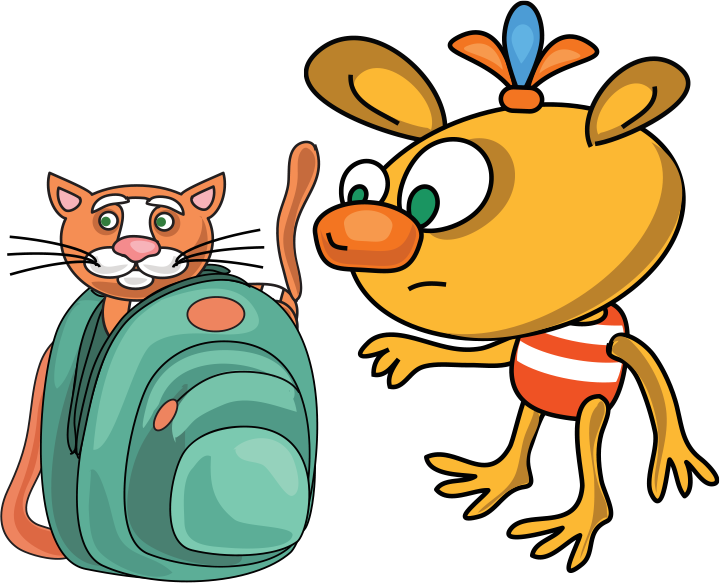
Option 1 for younger children: - You have an actual bag in front of you and, if possible, a variety of natural objects, so the child or children can choose one of these if nothing else comes to mind.
Option 2 for older children: - You imagine having a bag in front of you, and you share your ideas on what you want to pack.
First, you have to decide with the child/children where you want to travel to and why you will travel there. Then you can imagine what you need to pack for this adventure. Everyone has their own ideas and contributes to packing the bag.
The parent or kindergarten teacher may start the game by saying, "I packed my bag, and in it, I put a shirt." Then, it's the child's turn to pack something into the bag.
The child has to name the object that will be packed. In addition, they have to remember and name what else is already in the bag. Then, the next person continues the same way, filling the bag while naming everything already in it and the new object they add. Everyone is challenged to recall everything correctly (and for playing with older kids, it should also be remembered in the correct order). When everyone has put something in the bag, you can either stop the game or continue.
-
"Once upon a time, there was a …."
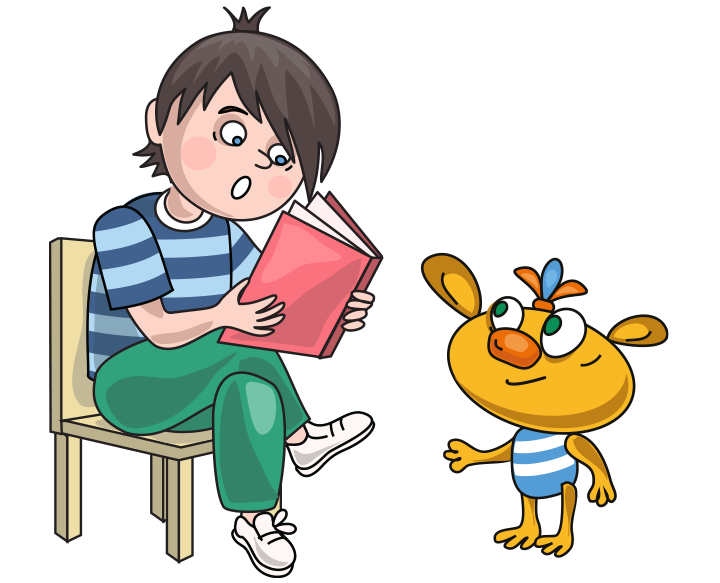
Rules of the game:
One person starts the game by saying: "Once upon a time, there was a little girl travelling to…". At this point, the child is invited to continue the storyline with two more sentences. Then again, the next person is asked to continue the story from when others left it. In this way, you ensure your child contributes more and more to the conversation. Every time you play this game, you create a new story together while having fun and laughing about the evolving story.
-
"I spy"

Rules of the game:
One person may start by saying, "I spy with my little eye something beginning with the letter A /, and its colour is blue." Everyone looks around and tries to figure out what the person meant. One after the other, the players try to guess the correct answer with the words "Could it be … ?" The one who guesses it correctly may take the lead now and spot another object to refer to.
-
"How was your day?"

Rules of the game:
You can also think of developing a night routine for a game. When you go to bed, take a few minutes to discuss your day by asking simple questions: 1) How are you feeling right now? 2) Do you want to tell us something about your day? 3) What new things did you find out / learn today? 4) What are you thankful for from this day? Everyone can answer these questions by taking turns. Younger children will probably add less elaborate answers at the beginning. Still, with time, you will see them adding more and more to the conversation.
You can actively search for words that start with a specific letter, as mentioned in-game c). From there on, you may base a conversation on your child's contribution to the game. For example, suppose your child wants to direct your interest towards a mug on the table. In that case, you can continue the conversation with questions about what the child likes to drink from a mug. Suppose the child mentions an object with yellow parts. In that case, you can deepen their interest by asking what else is yellow or even comment on other yellow objects you like yourself. This way, little by little, children acquire more words and their meanings.
You can even add some "activity" parts. For example, when you play the game of packing the bag, you could actually pack a bag with objects your child is bringing you. From there on, you can continue the conversation by asking, for example, about the destination the child wants to go to with the bag.
… objects and toys children love to play with and are available in most households as, e.g. a ball.
A ball stimulates motor and social competencies as well as language development. You can actively support this as a parent. Through playing with a ball, a child may understand the meaning of the words "slow" and "fast", "low" and "high", "left" and "right", etc. A ball may roll "under a table" or be placed "on a chair". Playing with a ball usually involves telling the other what you want to do with the ball or how the game should continue. To accompany any action in the play with words may add to the child's linguistic repertoire - as long as these are meaningful interactions for the child and are experienced frequently. The ball is only one example of how toys and games can be used as language development supporting situations throughout the day. Any activity your child focuses on, like making a puzzle or building a tower with blocks, may serve as a language acquisition situation. You can use it as a chance to start a conversation that will be interesting for both of you. In such a way, you can also keep in touch with your child.
…rhymes and songs that help the child to play with language, to listen to the melody of language and the way language works.
Rhymes and songs also help to train facial muscles and the ability to pronounce words correctly. Children love rhymes they can memorise by repeating. They love playing with words. Rhymes are excellent for this purpose; most children profit from it and from listening to songs. Therefore, singing songs and practising rhymes help children playfully become competent speakers. Furthermore, knowing rhymes and songs is integral to each culture and language.
…the so-called dialogic reading.
When you read a book with your child, you may choose an interactive way of reading and retelling the story. It is not only about the child listening to you reading. It's about the joint experience of storytelling. You may explore the story with your child and let the child continue the story at some parts. You may even give some support with details added to the story and ask children questions related to the story. This way, you may become involved in a conversation with your child. Reading the same book repeatedly may foster such dialogues and help the child elaborate each time with more words and ideas on the story.
…reading a book or watching pictures/photographs with your child while describing what you see incorrectly, hoping the child tries to correct you.
For example, you may describe a photo showing a boy playing with a toy kite, telling your child, "Look, the girl is playing with a kite." or "Look, the boy is flying a kite!" Many children would laugh, protest, say that you made a mistake, and try to correct you using their language skills. Even if not, you can continue the conversation by asking if the child thinks what you said was correct and continue from there by asking what the child sees in the photograph.
You can think of many similar ways to play with language that interest children and support language development.
3
Do you have worries or insecurities regarding bi-/multilingualism?
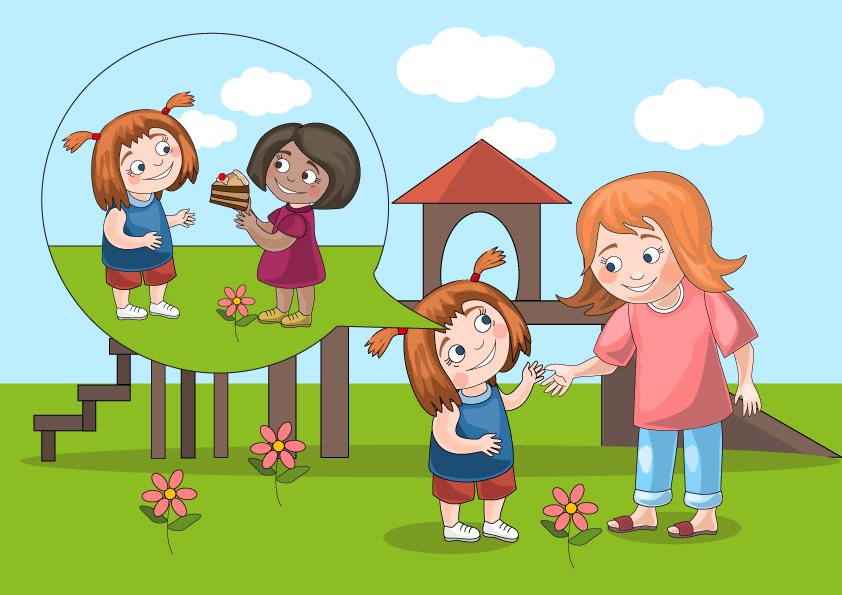
You may ask yourself if your child is confused by more than one language spoken at home or in the surroundings (e.g., kindergarten or school). You may be worried when your child changes between languages regularly. You may think that your child can not keep the languages apart. You may be anxious about whether more than one language could become a problem when entering school. You may even think that being multilingual from an early age has specific disadvantages for your child's development.
We want to explain why acquiring more than one language and then changing between languages regularly is usually no problem at all when children and adults communicate with someone who speaks the same languages as they do. In addition, we want to address some myths about bi-/ multilingualism and present the current state of research confirming or falsifying the myths. Furthermore, we will provide some activities to deal with this typical phenomenon of switching languages (so-called code-switching).
What happens in the brain when…?
Language development is a complex process. When we acquire language, our brain reserves space for all the parts of that evolving language system. In this space, one can find a constantly growing network of cells activated when communication is to happen. This network of cells transports and connects information bits linked to language comprehension and production. When a child is acquiring/learning more than one language, the brain builds additional connections between the different languages. They are all activated when we want to communicate. Our brain then quickly decides which language makes more sense in which context and with whom. We usually don't even have to think about it.
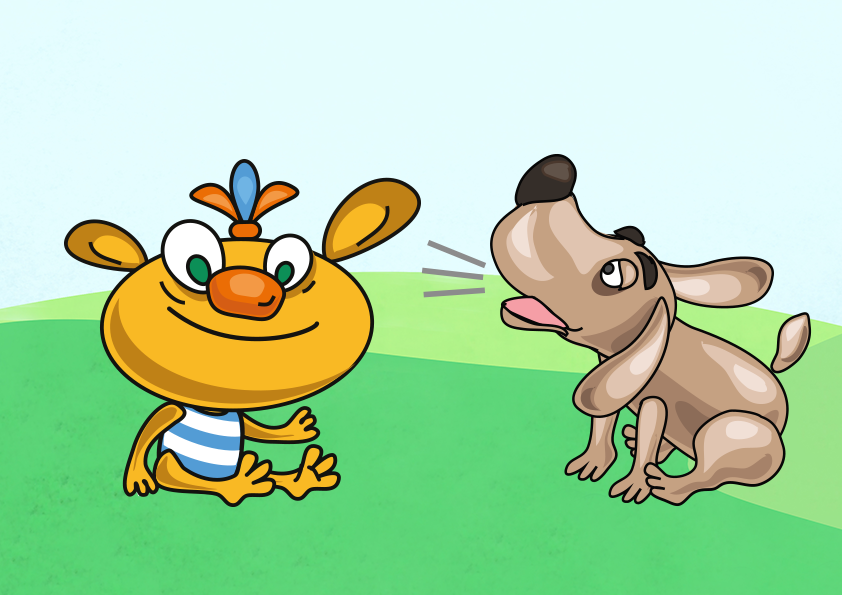
When we know that the person we want to communicate with speaks the same languages as we do, our brain does not need to focus just on one language. In this case, the brain provides instant access to all the knowledge and skills in all the languages we can use (also called the linguistic repertoire) in a typical conversation. Consequently, we can use a more significant amount of vocabulary or grammar. It helps to choose the language most suitable to describe something precisely, in more meaningful details. In addition, access to some words and expressions may be provided faster in one language than in another, and we can use the language popping up first without being anxious about not being understood.
Changing from one language to the other is part of our multilingual reality and is called code-switching. Code-switching can happen within one sentence, between sentences, or when we change topics. Code-switching is a sign of a highly competent speaker because the rules of the used languages are usually maintained, and language is used creatively and effectively to make oneself understood. Children learn very quickly with whom they can use the languages they are competent in.
When children get access to a rich vocabulary and enough practice time in authentic and meaningful conversations early on, the different languages may develop parallelly in the same rich quality and quantity. When this is the case, code-switching can take place quickly. Providing children with access to different languages in a well-balanced manner shows them that all languages are precious and important and that they can use their linguistic repertoire without hesitation. In the long run, doing so may help the children become competent, proud speakers in every language they become familiar with.
Common myths about bi-/multilingualism
Typical phrases one can hear about being bi-/multilingual. Is there some truth in it?
"To be bi-/multilingual is not a 'normal condition'."
To be monolingual is relatively rare worldwide. The majority of the world's population is, at least to some extent, bilingual, if not multilingual. In other words, that is the "normal" condition.
"Children who grow up with more than one language will be confused." or "To grow up bi-/multilingual hinders children from becoming competent speakers in any languages they have acquired."
There is no evidence that children are confused by more than one language.
Children become competent speakers in all the languages they grow up with as long as there are enough meaningful conversations—rich in words and expressions—and as long as there are no other mental or physical impairments. Impairments typically impact all the languages the child becomes familiar with.
"Code-switching confuses children and shows they are not competent in the languages they grow up with."
Code-switching is a competence on different levels: On the one hand, it shows the speaker's ability to use grammar and expressions of different languages correctly. On the other hand, code-switching may help facilitate conversations or emphasise certain aspects of the language that seem most adequate for the speaker in a particular situation.
"To grow up bi-/multilingual has negative effects on the development of children."
On the contrary, there are some positive effects on children's cognitive development.
Studies indicate that bi-/multilingual children can develop some important skills earlier than monolingual children because they compare languages constantly and on a daily basis, for example, the knowledge about languages and their rules. Also, the awareness of different sounds and syllables and how they can be linked to words may develop earlier. Furthermore, the control and focus of attention and the knowledge about others knowing different things than oneself may develop earlier in multilingual children. Additionally, growing up bi-/multilingual may positively affect communication strategies and the motivation to deal with even more languages (and cultures).
"Growing up bi-/multilingual, you have an advantage when you want to learn another language later on."
Yes, it can be an advantage. Bi-/multilingual children compare how languages work and the rules that are important in each language from early on. As a consequence, when learning more languages at a later stage, they understand the general idea of different language rules and structures faster and may master a new language faster.
"The later you confront children with a second or third language, the better it is for the child."
On the contrary, the earlier a child learns a new language, the easier it will be for the child to master it—as long as there is no mental or physical impairment or lack of support in the learning process. In general, learning processes change with time, and the effort needed to learn a new language increases from school age on.
"You are only bi-/multilingual when you master both /the respective languages perfectly."
Being bi-/multilingual should be understood as being able to communicate sufficiently in both/all respective languages. Mastering a language perfectly is a rare achievement, even for people who call themselves monolinguals.
If children are pronouncing a sound in one language incorrectly (this can happen when, e.g. the letter "r" or "th" are both differently pronounced in certain languages) or don't remember words in one language, it does not mean that they are not bi-/multilingual.
"Parents should also promote the school language at home to support their children's school career."
On the contrary, parents should speak their family language at home, the language they can best express themselves in. There are various advantages to doing so:
- Parents can create meaningful conversations with their child.
- Giving the child language roots in the family language, the child gets a basis for further language learning situations.
- It is also recommended that the family stay open and even support other languages brought into the family, especially the school language. By showing children that family language and school language are equally important, the child may stay more motivated to become a competent multilingual speaker.
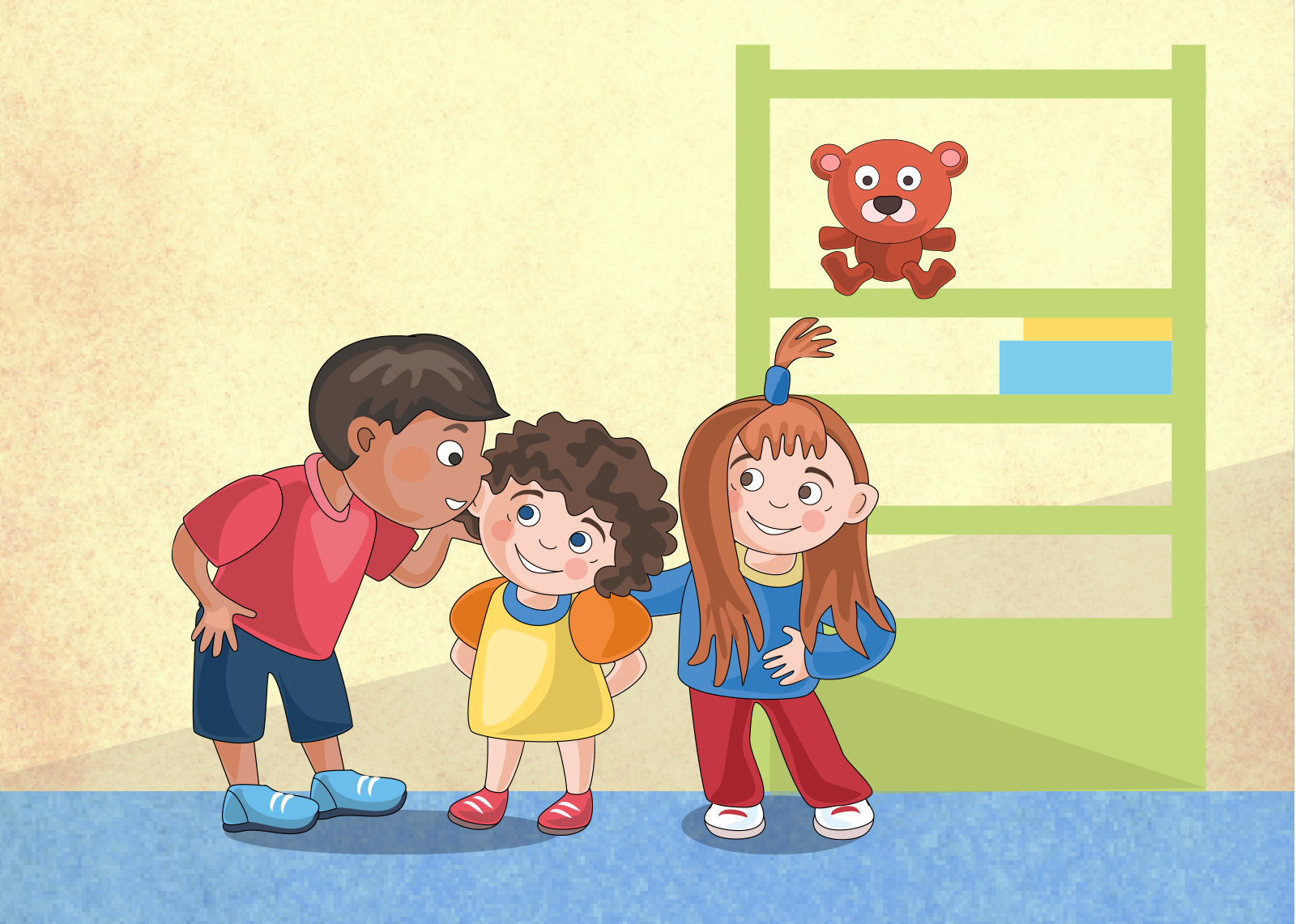
How can I support my child in developing a rich vocabulary in the languages that are meaningful to me and my child?
- Respecting and appreciating all the languages in the surroundings (e.g. kindergarten, school, etc.) is an essential first step.
- Giving the child the freedom to communicate with all the language skills and vocabulary in all the languages the child is familiar with (the linguistic repertoire).
- Using different words and expressions during conversations in the family language and inviting the child to participate in conversations. For example, on the way to a nearby playground you can discuss what the child wants to do there or what you could do together. You can also speak about what the child remembers from the last visit to the playground, and from there, you can see what the child wants to focus on. It is recommended to use open questions, starting with "What…? Where…? Who…? How…?" so that the child won't use only "yes or no" answers.
- It is important to speak the family language to create a solid foundation for any other language the child will learn later. However, providing opportunities that make it easier to access the school language is essential as well. For example, through…
- …listening to stories with the child.
- …participating in activities that are provided in the school language. For example, a drawing course, a museum visit, or participation in organised sports activities.
- …watching short videos with the child.
- …using language learning apps with the child.
In doing so, you can make the school language an adventure worthwhile for everyone within the family.
Takeaway messages:
- Children generally do not have a problem with learning more than one language.
- Our brain works with all the available linguistic repertoire simultaneously. Depending on the situation, the brain decides very quickly which part of the repertoire will be used.
- Code-switching is a competence, not a problem or an undesirable development.
- Using many different words and expressions when communicating with your child supports language development.
Activities for supporting language development in general
Activities supporting language development in general are also suitable for supporting multilingual upbringing. They simply need to be adjusted for all the languages involved.
- You can play word games using the vocabulary of all languages relevant to you and your child. It can be a funny challenge for all family members (e.g. "Broken telephone").
- While outside, you can name objects in the family language and, in turn, also in the school language. This way, you add some more words to the child's linguistic repertoire.
- You can show and compare the different ways words are written in the family language and the school language. This way, the child gets a first impression of different letters in different languages. Doing so will make it easier for the child to prepare for reading and writing later on (so-called literacy). Draw the child's attention to written signs in the street and common brand names in magazines and newspapers, e.g., Coca-Cola, Superman, etc.
- Nowadays, bilingual books are available in more and more languages. These can support language development because they provide plenty of options for using different words and expressions in different languages. With the help of bilingual books, you can compare different words and expressions in different languages, and maybe you will use code-switching. Parents and children can furthermore discuss similarities and differences of languages and compare the different sounds of languages. In addition, reading bilingual books with children is a way to show that different languages are equally important.
- Alternatively, you can watch cartoons with subtitles in your first language and then in the second language.
4
How do we deal as a family with bi-/multilingualism on a daily basis?
Families and institutions use different strategies to deal with bi-/multilingualism in their daily lives. What strategy is chosen depends on what is believed to work best for the children. As knowledge about bi-/multilingualism grows, certain strategies turn out to be more or less valuable for the development of language skills in the long run.
1st strategy: Only the school language is spoken at home and in public

For a long time, parents were advised that also using the school language at home would avoid confusion and overburdening for the child. This advice was usually well-intended, but in the meantime, research has shown that it deprives the child - and also the rest of the family - of its language and cultural identity. If there is no daily routine for using the family language, it will be neglected. If the parents are not fluent in the school language and grammar and vocabulary skills are restricted, the child won't get enough support in the process of language acquisition. This won't help either with the acquisition of the family language or with the acquisition of the school language. We also have to consider that learning different languages is usually a manageable challenge for the child (see Chapter 2). So, this formerly popular strategy is nowadays seen as not recommendable.
2nd strategy: One person, one language
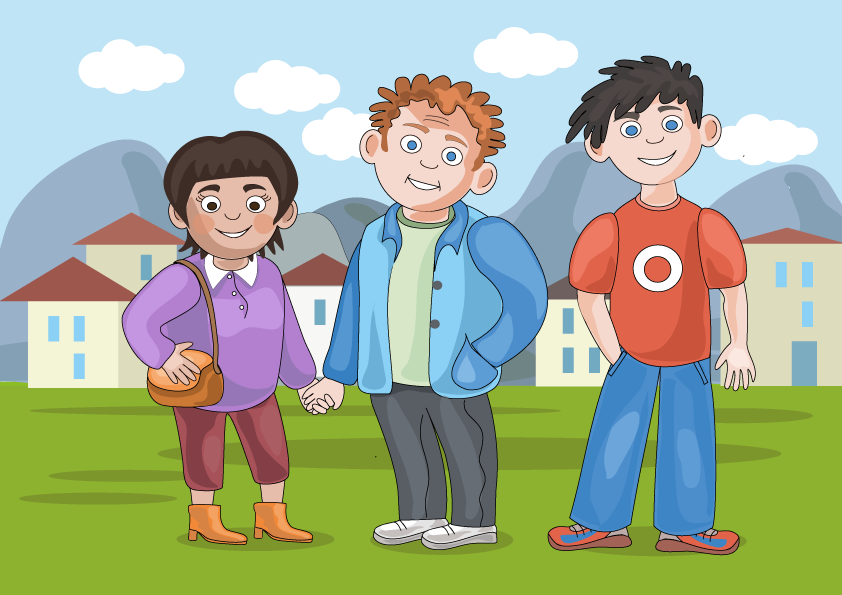
Another approach is the "one person, one language" strategy. Each parent communicates with the child in the language the parent is most familiar with. This way, the child is provided with elaborate and diverse expressions and words in each language the parents choose to communicate in. Emotions and ideas are usually better expressed with more adequate words in the language a parent masters best. This strategy also gives the child many opportunities to acquire the languages in authentic situations. It also makes it possible to maintain language and cultural identity since the child can access different parts of the family's language heritage.
A variation of this strategy is the one where parents speak the family language at home but change into the school language as soon as they interact outside their home—often trying to fit into their surroundings.
This strategy requires a high amount of self-discipline and effort to use one language consistently and not change to a different language when more than one family language is used at home. It may involve much "translating" to the other parent who may not master a specific family language. On the other hand, if pursued consistently, it may support the acquisition of a rich vocabulary in the languages the child gets in touch with. Furthermore, this strategy also allows parents to express their mutual appreciation for their partner's cultural identity.
3rd strategy: Translanguaging
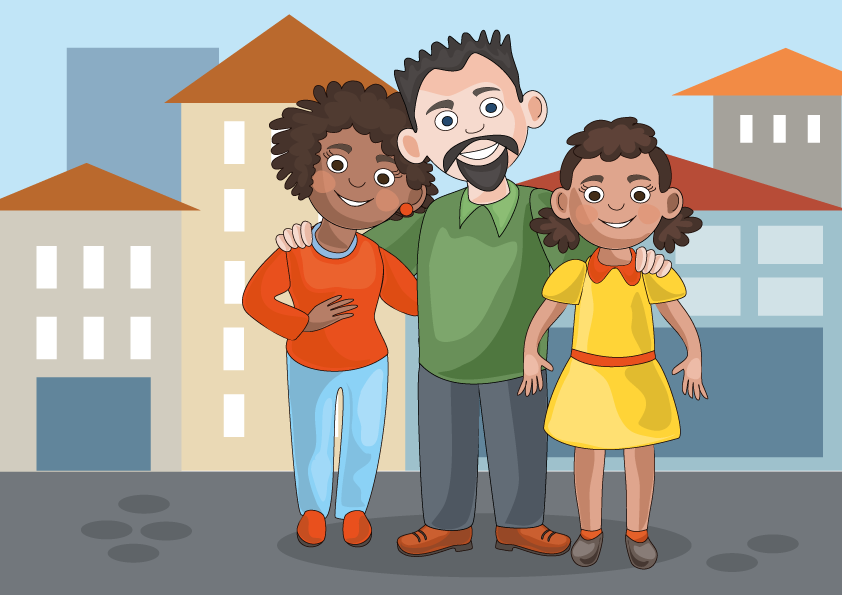
Translanguaging is an approach where all people involved in a conversation may use all of their linguistic repertoire (all the language skills and vocabulary in all the languages one person is familiar with). This approach respects the multilingual realities of the family. It allows adults and children to interact freely, using their language skills to the maximum. This strategy requires an awareness of different language-promoting situations to support the child's linguistic repertoire in a balanced manner. In other words, the child is invited to use their complete linguistic repertoire to express themselves. Still, parents are responsible for supporting language development in any language the child is familiar with as much as they can. This way, the child can get new impulses in any language provided and may learn the school language more efficiently in line with parental approval. Furthermore, parents can also deepen their own linguistic repertoire while providing their kids with good learning opportunities.
Reflecting questions:
- What family language do we use in our family?
- If we use more than one family language, are there special situations when we prefer one family language? Why is that so?
- Which are the strategies we feel most comfortable with in our family?
Takeaway messages:
- Families and institutions use different strategies. The aim is usually to support bi-/multilingualism and the child's future educational success. Parents and institutions should be aware of the potential chances and challenges of the different strategies.
- Families should be encouraged to facilitate access to all the languages vital to them and essential to their child's educational career. Parents could also use the opportunity to enrich their own linguistic repertoire while doing so.
5
Why is it so important to foster both - the school language and the family language?

Studies show that there are several advantages for children growing up with more than one language. Children may more quickly understand the way languages work in general. Because they deal with different languages and their grammar and words daily, they compare the languages and their rules from early on. This happens usually in a playful manner. They may be more attentive and conscious to the sound and composition of words, which may in addition accelerate language acquisition and learning, also in other languages, like the school language. They may be able to focus their attention earlier and better than children growing up with only the school language. Also, they may understand earlier that different people may know other things than they do (the so-called theory of mind). Thus, growing up with more than one language from early on can be considered valuable for the general development of a child.
The family language plays an important role here (when not neglected or poorly supported by the parents). Parents transport not only words, expressions, and grammar by using the languages they master best. They also transfer values, beliefs, ideas, and attitudes that are part of their language and cultural identity. To speak and listen to the family language may also transport a sense of belonging and comfort. Depending on the context families live in, they pursue different ways of communicating with their children, use different topics when interacting and different amounts of words and expressions and address their children in different ways. The more parents speak with their children, the more children can profit from the family language. Being competent and also confident in the family language may heighten the child's motivation and curiosity to learn other languages. In other words, it may support mastery of the school language as well. For this reason, parents are well advised to make an effort to keep the family language.
Getting early access to the school language is seen as crucial for the further school career of children. Researchers suggest that children might profit from being introduced to the school language early and systematically. Ideally, this could happen before they enter elementary school. This is important because it enables children to understand the teachers' instructions and learn alongside their peers. Without early and significant access to the school language, equity in education is rarely reached, and many children struggle throughout their childhood to catch up. This may lead to less success in their school and professional career later on. Kindergarten teachers may play a crucial role here because they are often the first to introduce the school language systematically. Also, parents can make it easier for their children by offering opportunities to get familiar with the school language at home. In other words, parents are well advised to foster their children's attempt to become competent users of the family and school languages as soon as possible.
Takeaway messages:
When growing up with more than one language:
- Children may have advantages considering their cognitive development.
- Children may have advantages regarding their understanding of languages in general.
- Parents should be ensured and invited to consider the family language essential for their children. However, they should also promote the school language from early on to make it easier for their children to be successful in school later on.
6
How can we support and foster the school (and family) language at home?
We live in a multilingual world. Family and school language are both part of a child's reality. Children usually have access to both at home, e.g. via media use. As a parent, you are invited not to reject or exclude languages at home, neither the family language nor the school language. It is essential for the child to get the feeling that all languages are welcome and valued by the family, even if the family language is probably - and rightfully so - more in use and supported at home.

Here are some examples that may give you an idea of how to easily and playfully support the school language at home without neglecting the family language.
Example 1:
Aaron (4 years old) is returning from kindergarten with a new song he learned in the morning. His mum is a little bit confused at first. She heard the song often a long time ago, but never with lyrics other than those of her family language. Aaron sings the words in the school language, which she neither understands nor speaks well. At home, they usually all speak the family language.
Such little incidents happen more often than one would expect. But how do you react to it? For her to show that she values the school language, one possible reaction could be to actively listen to the "school language version" Aaron is singing and then direct Aaron's focus toward the version in their common family language. They could sing both versions together, or Aaron could sing one version and his mum the other. This way, they both could profit. Aaron could also learn the lyrics in the family language and even proudly present them in kindergarten the next day. His mum could learn a few new words in the school language. Such short encounters are quality time spent with your child and simultaneously a wonderful opportunity to support language learning playfully.
Example 2:
Nina (3 years old) wants her dad to read her a book, which they got from their neighbour Max (4 years old) as a present. The book is written in the school language, but at home, they speak only their family language. Her dad does not understand or speak the school language well, but he has started taking classes to learn it.
Her dad could read the book to Nina in the school language. Nina may even insist that her dad read the book precisely as she was listening to it when Max's mum read it once to her and Max. At a later point, Nina and her dad could retell the story in their common family language and even add some details or discuss the story. This way, no language gets rejected.
Example 3:
Sanaa (5 years old) fled Syria to the EU with her family. They live in a shared accommodation for refugees. She has yet to visit kindergarten. Furthermore, almost none of the other children or families in the accommodation speak the school language. As a result, access to the school language is extremely limited. In one year, she will have to go to school without knowledge of the school language. Her older brother is currently receiving language promotion to prepare for school. He struggles with the school language and understanding what the teachers say. In the afternoon, they watch animated videos for children in the school language together to get used to it. Their mother sits close by and listens to them, too.
As a parent, you are invited to use your family language and be open to the school language as soon as possible because the school language will be essential for your child's further educational and professional success. The school language will also be essential for integrating into the surrounding society. Most books and media presented to your child will be in the school language. Peers will likely be multilingual, and their common language for communication will probably be the school language. The earlier your child gets access to the school language, the more time your child will have to learn it before school starts and the better prepared your child will be when entering school. Parents can facilitate and accelerate access to the school language and even profit themselves by learning alongside their children.
The same applies to the growing use of apps. Gaming or educational apps are not developed and published in every language. As a parent, you can show that you value the school language by exploring media presented in the school language with your child. You can ask your children's teachers or other parents if they know apps to help explore the school language.
More ways to promote school (and family) language at home:
- Have a positive attitude towards all languages.
- Bilingual books at home to alternate between languages when needed or wished for.
- Have peers around who are native speakers of the school language.
- Have peers around who are native speakers of the family language.
- Recreation activities with your child in a context where the school language is used. This way, it becomes a language immersion situation for the whole family (e.g. child theatre, visits to the public library, sports events for children, etc.)
- Use different media for your child to get early access to school language, like audiobooks, songs, rhymes, or even little videos when appropriate. The same applies also to media use in the family language.
- Stay close to your child and learn alongside them when they are getting access to the school language, e.g. through media use.
- Praise any progress your child makes in any language.
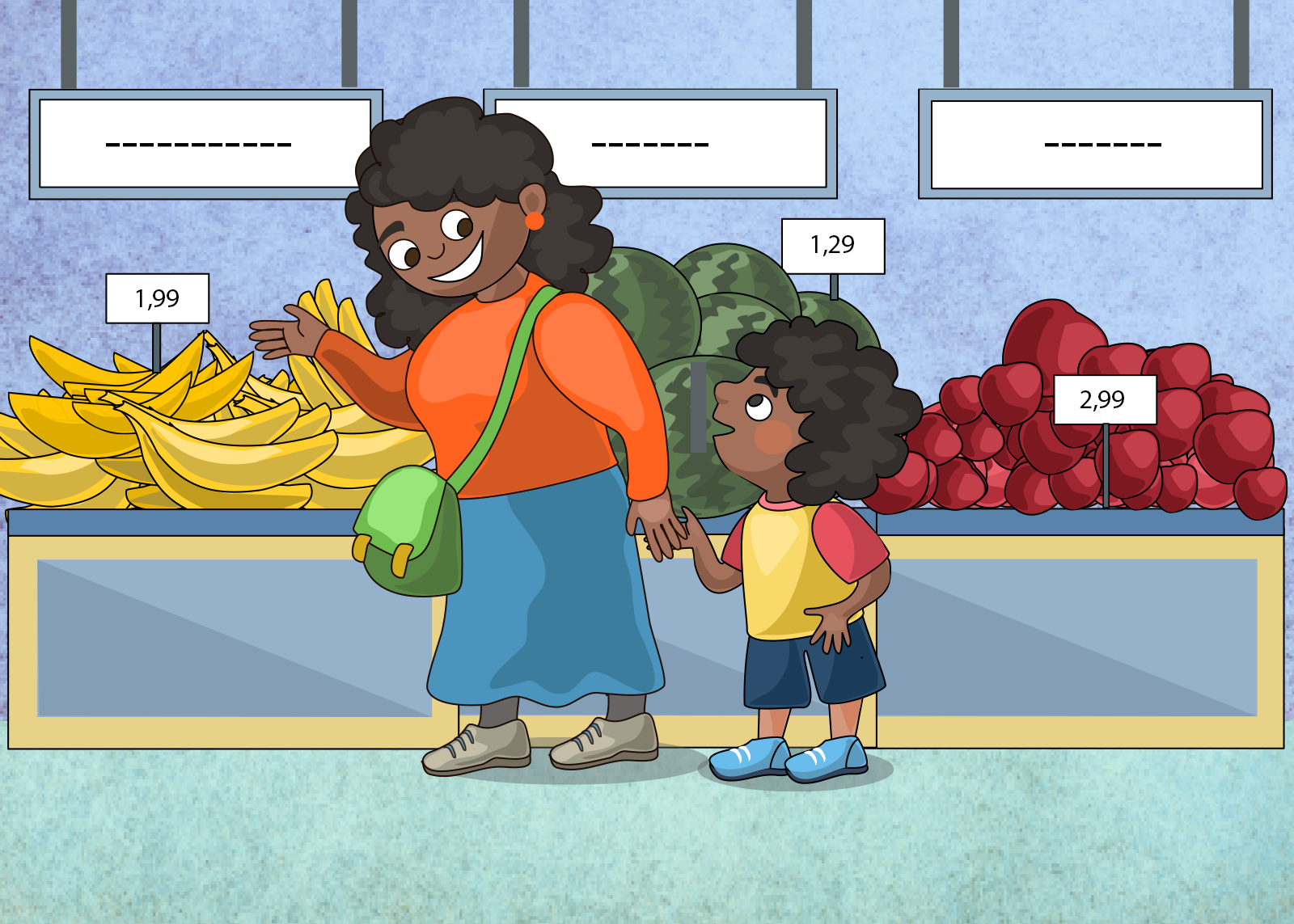
This way, even as a non-native speaker of the school language, parents can help their children get better access to it. However, neglecting the family language in this process is not recommended. Family language should not lose its importance.
The key to language development – regardless of family or school language – is a learning environment with lots of authentic conversation involving as many words and expressions as possible, varied stimulation and the feeling that all languages are valued and accepted. A lot of strategies may be followed and are suitable, as long as you do not force to use or even punish your child for not using one language or the other. Language support should be ideally playful, unforced and implicit, as well as linked to positive experiences for the child.
Language support can occur everywhere and in every situation. Your child is curious to learn and explore. Even when you go for a walk, you can try to read the signs on the street together. This supports language development and literacy. For example, you can try to figure out with your child what a certain sign on the street may mean and discuss your ideas. A similar procedure can take place every time you enter the supermarket with your child.
Example:
A child (5 years old) already recognises the vowels in the school language, like a, e, i, o, u. Together with their mum, they figure out that, e.g. the word banana refers to the bananas in front of them. Even so, the child can try to figure out what the letters on boxes mean, and both can elaborate on that. This way, the mother and child can playfully discover the school language. Furthermore, the child is getting an idea of how words are written without explicitly having to learn them. Both can profit from this way of going to the supermarket. Such interactions can occur everywhere and can be used for parents and children to access the school language in a playful way even when they do not speak or understand it yet.
Speak with your child about your common everyday experiences. By doing so, you help your child to make sense of the world surrounding them. Use the family language as much as you can. In addition, introduce yourself and your child to the school language, which will become an important part of your lives as soon as your child enters the educational system. You may stress that your family language is different from the school language and that your family language is the one you know the best and the one you will focus on at home. However, you can deal with both school and family language (e.g. make it a game to find similarities or differences between the languages) and show your child that all languages matter and are important.
7
Why is it important for kindergarten teachers to support both the family language and the school language on a daily basis?

Kindergarten teachers are often insecure about how to deal with children growing up with a family language that differs from the school language. There is a widespread assumption that these children are at risk of failing their school career later on and that they all need intensive language training as soon as possible. In some countries, programs exist to provide early language training, especially for migrant children, as they are suspected to need it the most. However, the assumption has been proven to be too short-sighted, and the programs are often found not to work as well as expected. The risk for children with a family language other than the school language to fail their school career rises only if other factors add up as well (like missing language support at home, missing access to books, and when parents have less experience with education and schooling in general).
However, when there is little or no experience with the school language at the time children have to enter the school system, they may struggle to catch up with the content and the instructions that other children may easily understand and follow simply because they already know the school language. Children can profit greatly from an early immersion into school language by peers and professionals, preferably already done at preschool age. It's nothing less than a matter of future equality and equity to aim for similar starting conditions when children enter the school system.
Immersion processes work better when families and children feel welcome, seen and respected with all their assets and resources, including their family language. The family language is part of their social, cultural and language identity. It should not be perceived as less valuable than the school language. Ignoring or even forbidding the family language, e.g., in kindergarten in favour of immersion into school language, often leads to unintended outcomes. It may cause a feeling of rejection for the child. This may negatively affect the child's self-perception and motivation to engage further with, e.g., more languages, like the school language.
In brief, embracing family language and supporting school language mastery should be part of the daily routine in kindergarten to ensure the best possible start in the school system for all children.
How can a good balance between family and school language be achieved in kindergarten?
Kindergarten teachers may ask themselves how they can support all the languages in kindergarten, especially when they master the school language but are not familiar with any of the family languages the children are familiar with. It may help here to keep in mind that supporting all children with all their resources means not only fostering the school language (via using a rich vocabulary and language input in an elaborated way). Support also means valuing each child's social, cultural and language identity, including the respective family language.
Getting an overview of the existing languages in the institution
For this purpose, an overview of which family language is spoken in which household may be the first step to take. This sounds simple, but there may be some things that need to be clarified. The assumption that a family that, for example, migrated from Italy to Slovenia will have Italian as a family language may not be correct. It could be Slovenian, Japanese or any other language. Furthermore, a non-migrant family may speak another language different from the school language at home. Professionals could ask themselves:
- Do I know every family language of every child under my care?
- Do I know if the child understands and speaks every family language used at home?
- Do I know which family member talks to the child in which language?
- Do I know how the child responds when addressed in one language?
- For example, is the child answering in the same language they are being addressed in or in another?
- For example, can the parents say something about how many words and expressions their child uses in the family language on a daily basis?
- Do I know if parents are worried when their child answers in a different language than the one used by the person addressing the child?
- How do parents react, then?
- Etc…
Professionals should determine which family language is used at home instead of pre-assuming. However, some families may perceive such direct questions as rude, the issue too private to share, or even offending. Professionals should be aware of this possibility and emphasise to the parents that they want to create a learning environment where each child's cultural identity and family language are valued and represented equally. In addition, professionals can point out that the knowledge about how a child gets along with the family (and school) language may help them support both the family language and school language for each child individually. Professionals can also point out that it is done for the purpose of later success in school.
A child who answers correctly but not in the language in which the question was asked shows that the request was understood (sometimes instead shown through correct reactions rather than spoken answers). The child could be considered translanguaging or still feel uncomfortable using the school language. A professional may support the child in such a situation by adding words and expressions to complete or repeat the child's answer / accompanying the child's reaction with words in the school language without forcing the child to use that language (corrective feedback and elaboration).
It could also be that the child does not use the necessary articles or the correct prepositions in the school language because there are no articles or because there are different prepositions in the family language. These are examples of possible reasons for a certain way of starting to speak the school language. Suppose the professional is aware of the specific family language the child is used to. In that case, the professional can focus on such issues and help emphasise, e.g., the use of articles and prepositions in the school language.
However, suppose children need help understanding and/or producing the family and school language simultaneously. In that case, professionals should also be aware of this as soon as possible and introduce language training or even diagnostics for language impairment.
Thus, professionals must be aware of all the steps children take to become competent language users in any language (see also Chapters 1 and 2). It is also essential for professionals and parents to remember that every child has their own pace regarding language development and acquisition (see Chapter 1). One child will be faster, and one will be slower, but there is generally no need to worry about it.
Some strategies and methods to support the family language in the institution
One strategy can be to provide important information to parents in every family language on procedures and events taking place in the institution during the year. This serves the purpose of reducing misunderstandings caused by insufficient communication due to a potential language barrier. Parents may feel more included and may participate more when they fully understand what happens at the place their child attends. Providing information in many languages and the chance to read announcements in different languages represents an openness towards the diversity of languages and cultures. It can be regarded as a step toward more inclusion. Sometimes, it might even be helpful to include someone who can interpret to facilitate communication even more.
In addition, welcoming sentences written on posters or drawings of children heighten the visibility of the whole treasure of languages within the institution. Every family language may be displayed, and families and children can find bits of their family language in the institution. It supports children's literacy implicitly because children can see words written in their family language, ask questions about them, and explore them with their family or professionals. Children may also now and then be greeted in a different family language to show and praise the many languages in the institution. This way, children can listen to their family language from time to time outside their home.
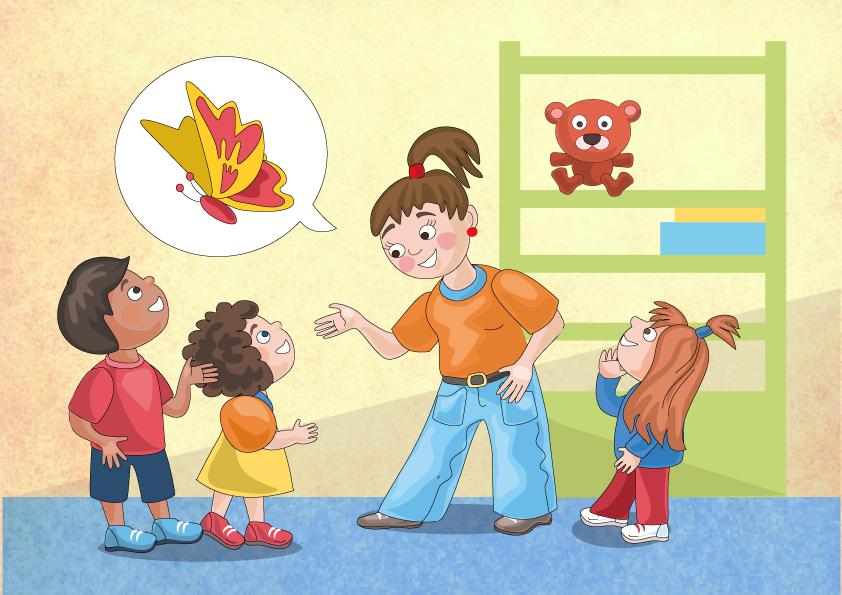
Projects like translating children's books to create a multilingual library or recording songs and writing down the lyrics can be done with the help of families. This may enhance the effect of an inclusive approach to language support, and it values each family language. This way, a child's family language also becomes accessible to other children and families, which in turn may facilitate contact between families and the institution as well as contacts between the families. This way, prejudices may be reduced. Children could find their family language already represented when they enter the institution for the first time, which may be comforting.
Open questions about the names of specific objects in languages other than the school language allow all children to make their family language visible in the institution. Simultaneously, the language skills in the school language may also profit through evolving conversations in such situations. However, it is important not to force children to use their family language in front of others. Bringing the family language into the institution should be voluntary and considered positive. It is better to ask a question like "Do any of you know the word for butterfly in another language?" than to ask specific children ", Please tell us, how would you say butterfly in your language?". Such questions discriminate and make the child think that they differ from the rest of the group; they create a "me" and "them" or "we" and "the others".
Many more creative ways exist to value each child's family language. Everything that shows genuine interest and appreciation of this aspect of a child's identity and family can be considered support.
Some strategies and methods to particularly support the school language in the institution
Kindergarten teachers are prepared to provide learning opportunities for all children to get immersed in the school language. According to national regulations for such institutions, it's part of their responsibility. Language training sessions several times a week are one approach to promoting language development. Enriching the children's vocabulary and language comprehension and production via a lot of elaborated authentic conversations on topics children are willing to participate in on a daily basis is another approach to fulfilling this responsibility. Staying interested and inquiring about more details within meaningful conversations motivates children to use more elaborate words and grammatical structures without being explicitly taught new words in the school language. Children thereby imitate their language role models, namely the professionals or their peers. Professionals are perceived and perceive themselves as language models for the school language. They watch out for what kind of words and content they use daily to enlarge the children's vocabulary and grammar skills. Children can play with the language and explore it with curiosity, especially when professionals use:
- open questions (e.g. What? Who? How? When?)
- praise when a child says something correctly.
- the beginning of a sentence as a starting point for the child to finish it, as to evolve a story on a past or future event.
- new words or sentences to a child's verbal contribution as an additive to implicitly enrich their vocabulary and build up a story with the child as a co-storyteller.
- corrective feedback.
- ...
These strategies involve a child-centred approach focusing on the child's interests, ideas, experiences and emotions. However, some children are not used to articulating their opinions, needs and wishes within a conversation. Asking these children for their individual opinions on a specific topic may sound weird and inappropriate to them. They would instead respond to questions that address the peer's or family's interests, experiences, or needs. Professionals should, therefore, stay attentive so as not to rashly misinterpret a child's non-response or irritation when asked a child-centred question. More group-centred questions may help the child to contribute more, e.g. "How was the weekend with your family? What did you all do?" instead of "What did you do on the weekend?". Every situation can be used to support language promotion, for example, a future visit to the zoo or a past birthday party that can be retold together. Furthermore, any professional or child activity can be accompanied by describing what is happening using the school language. Any experience or challenge of the child is a suitable context to elaborate on and to get into a meaningful conversation that can be enriched effortlessly with new vocabulary or grammar structures. This way, the professionals provide language promotion and training without explicitly telling the children what they are learning.
Besides conversations on present, past or future events and retelling and evolving stories together, professionals can also use media to foster language competencies. Dialogic reading is one strategy that can promote both the school and family languages. Broadening the storyline of a book and integrating associated topics while discussing them with the child creates a situation of language promotion within a meaningful conversation. This is done while reading with and not only to children. Professionals may promote the school language in such a way. Still, it is also suitable for promoting the family language if families are involved in the actual reading and discussing the story with groups of children. This way, all languages are valued, and families may feel competent in this environment.
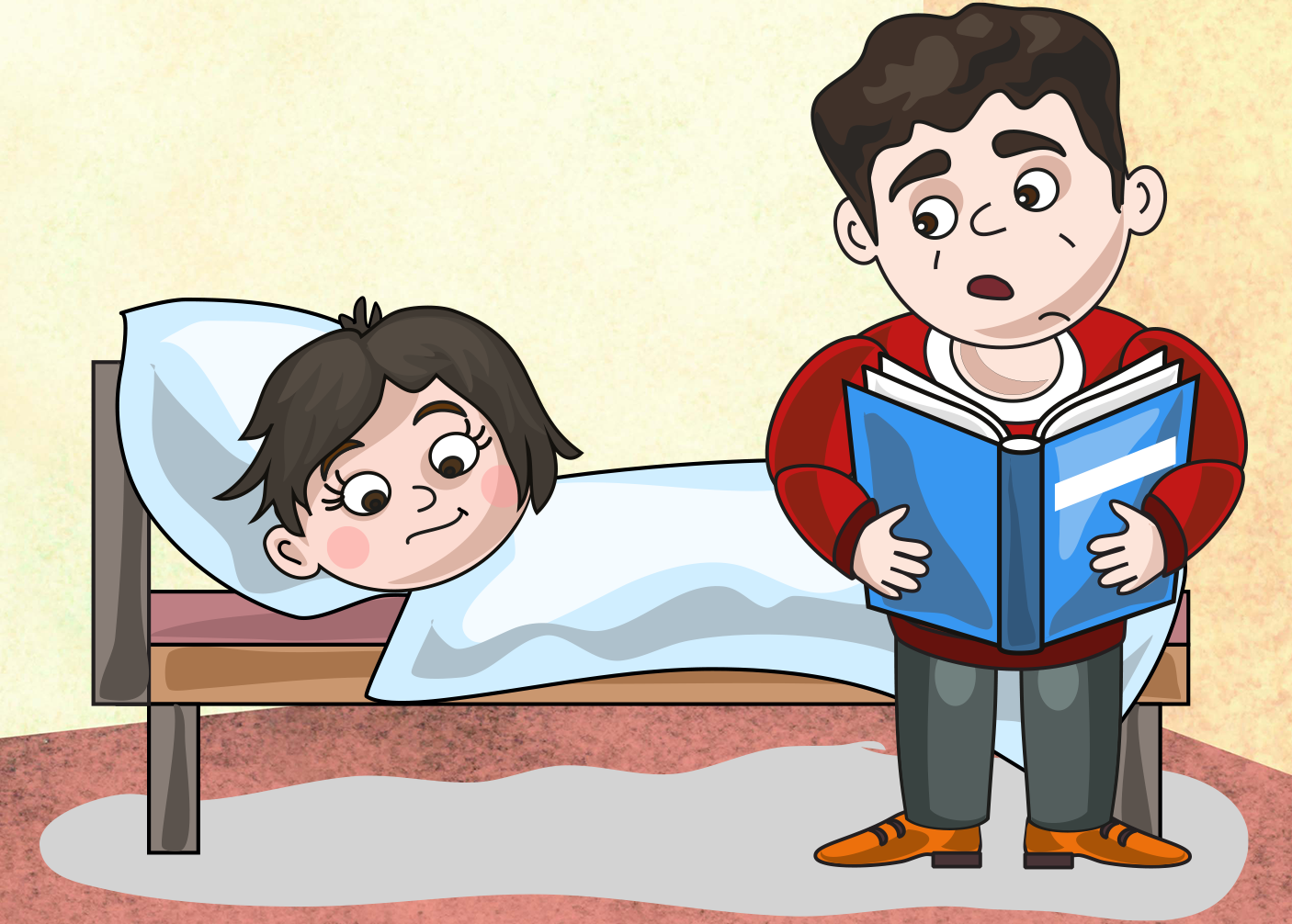
- Child
- Can you read it, please, the book?
- Dad
- Sure, let's sit down and we read it together, ok?
- Dad
- … And the fox tried to climb the tree … What happened then? What do you think?
- Child
- Oh, the fox falls, that hurts… like me today…
- Dad
- What happened to you today, son?
- Child
- Mean Mary, pushed and I falled down.
- Dad
- Really? You fell? Did that hurt a lot? What happened then?
- Child
- Got this, from Mom!
- Dad
- Ah, so you could still run to Mom with your knee hurting? You managed just fine then and with the plaster it should heal fast… What do think should the fox do now?
- Child
- Go to his mom?
- Dad
- And if Mom is not close by? Remember, he went on a holiday to visit his friends in the forest behind the big Mountain.
- Child
- The doctor, the fox needs a plaster!
- Dad
- You are right son, the fox needs a plaster. Oh look, this looks like a…
- Child
- Hospital!!!!
- Dad
- Yes, a hospital for animals, where all the foxes, bears, and … Who else can go there??…
With little effort, the child has many more words to include in his vocabulary by listening to his dad. The next time they read this book, they may find another way and topic to make the reading experience more interactive and dialogical.
Furthermore, the common and different features of languages can be discussed by groups of children when they listen to bilingual stories, rhymes or songs. Little games like "Broken Telephone" may awaken the curiosity for sounds and meanings of words even more.
Playing "Broken Telephone” can be fun and challenging at the same time. When children play “Broken Telephone”, the first one whispers a word or a sentence in one language into the ear of the second child, who in turn should repeat the word or sentence into the third child’s ear, still whispering. This process continues until every child participating in the game had a chance to hear the word or sentence. The last child repeats it loudly for everyone. The game aims to repeat the word or sentence used at the beginning correctly until the end. Typically, during the process, some syllables or words are misunderstood, and the resulting word or sentence that everyone can hear at the end is not the same anymore as the word or sentence whispered at the beginning. A discussion can evolve on what was understood at which stage, there can be a discussion on the potential meaning of an unknown word, words can be explained, and meanings in the school and family language of the children can be shared with all. Even discussions on similar sounding words or opposites can playfully be started with the children.
In such a way, every child may experience the feeling of not knowing a language but trying to make sense of what one is listening to. This invites children to guess the content together, and the professional may support the guessing process (e.g., through sustained shared thinking). All children may enlarge their vocabulary by listening and talking using the school language. Audiobooks or educational apps can also playfully foster the school language. They can be considered as a supplement to non-digital ways and media to promote language development and learning.
Professionals should remember that they may support all children's language development with these strategies and games. Still, every child will have their own pace while learning. This is normal, and the child should not be pressured during the process. As long as no physical or mental impairment influencing language development is involved, professionals shouldn't be impatient; instead, they should support children who might have a slower pace than others.
Some questions to reflect upon:
When dealing with more languages than the school language in the institution, one professional may feel comfortable. In contrast, the other may feel less comfortable. The whole team may take a few minutes, and everyone may reflect on their own reactions to family language embedded in the daily routines of an early childhood institution.
- What does it feel like when two children communicate in a language I am unfamiliar with?
- Why exactly does it feel that way?
- Why exactly do I prefer one language?
- Does that affect my reaction to a certain conversation between children? (To answer such a question, I can imagine a conversation in a language that fascinates me and another in a language that does not fascinate me at all.)
- What could happen in the worst case when children continue their conversation in their family language (a language I am not familiar with)?
Professionals may address their own attitudes or sometimes insecurities towards the use of family language in early childhood educational institutions in that process. Sometimes, not understanding the conversation between two children speaking the same family language may be irritating. Professionals may feel a loss of control. They can ask themselves what exactly disturbs them when they listen to a family language they don't understand or why they have preferences for some languages and not others. The prestige of a specific family language may influence the way professionals address this family language in their daily routines. This usually happens unconsciously. Professionals should be aware that this can happen and use methods, like supervision and intervision to address it. If professionals stay open and self-reflective and perceive themselves as constantly learning individuals, they can profit from what children - as experts of their family language - may contribute to different conversations. So, being a professional could also mean being the one to be taught something new.
Takeaway messages:
- It is essential for the child to develop a positive attitude towards all languages. This can be achieved by supporting both the family language and the school language.
- By providing an enriched and elaborate language environment, professionals can greatly contribute to the success of children's language development.
- For this purpose, children need to be involved on a daily basis in many conversations that are meaningful to them.
- Professionals can be creative with when and how to dive into a conversation with the child.
- Professionals may take a step back and reflect on their own reactions to multilingualism within the educational institution.
8
Why and how can new technologies like apps be used for language promotion/development?
Media use and media education
Mykola (5 years old) and his two younger twin sisters (7 months old) just moved with their mother to a new country. Despite his mother's efforts, he has yet to receive a placement in kindergarten, so he spends his days with his mom and sisters, speaking the family language and adapting to the new environment. Some family friends recommended a language-learning app for him to bridge the waiting period while playing with and learning the school language simultaneously. Mykola loves the little stories and tasks in the app; he quickly learns to respond to the instructions given in the school language. So, when he starts kindergarten a few weeks later, he does not feel speechless because he has already practised the school language a little. His mum is also happy because she can learn new words and phrases, as attending a regular language course with three kids is not easy.
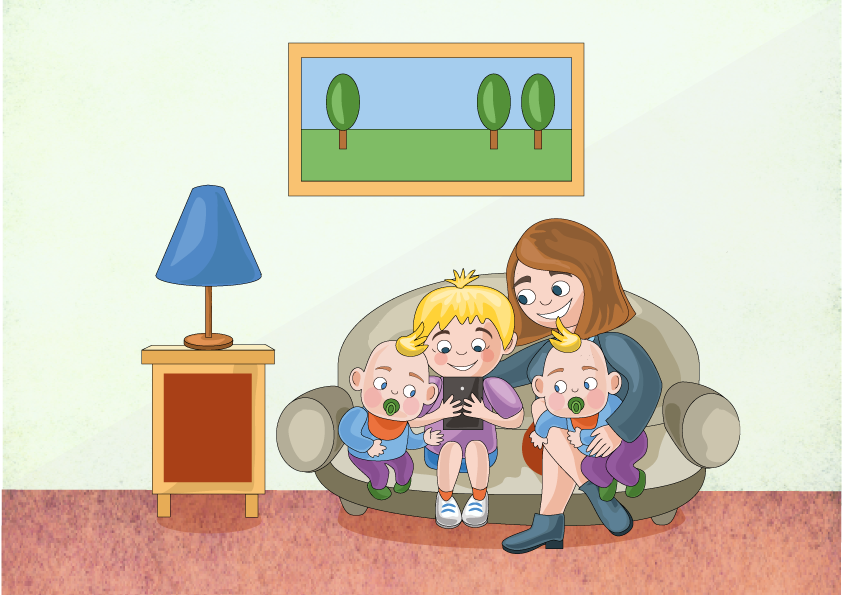
Nowadays, the internet and the use of apps are part of our reality and daily routines. Most people in Europe have access to the internet, either via smartphone, tablet, or computer at home. It is a tool to connect people or to entertain oneself by listening to music, gaming, etc. But it is also a tool for organising yourself, searching for specific information, and learning and practising acquired knowledge.
Media use has become a constant part of many children's lives. From early on, they interact with new technologies and digital media at home, primarily for entertainment (e.g., to play, see videos, or listen to audiobooks) but also for learning purposes.
Experts have created guidelines for children's use of screens. Time recommendations for different age groups vary slightly depending on the expert. Still, more or less, they follow the ones listed below:
- 0-2 year old children should not have any screen time (TV, computer, tablet, smartphone).
- 2-5-year-old children should have less than one hour of screen time a day under the supervision of their caregivers.
- 6-9-year-old children can spend a little longer in front of the screen each day, but preferably not more than one hour.
When you decide to introduce your child to apps, you should take time and select content for your child consciously and carefully. There are a vast number of apps targeted at children on the market. Still, only a few fulfil the quality standards the media and child development experts have set. One of the choices could be to select a learning app, but you need to be aware that the quality of these also varies considerably. Here, we have selected some information on how to recognise good apps and tips on how to select them.
Chances and challenges of using learning apps:
Learning apps can be useful because children are fascinated by media use, especially when something is presented in a playful, animated way. However, children need guidance to deal with all the information they get access to in order to avoid being overwhelmed, scared, or even traumatised. Adults, especially parents and teachers, should always accompany children and help them become competent media users. Consequently, media education has become increasingly important within families and in early childhood institutions.
Parents may worry about which apps to choose for their children. They may also worry about potential threats to their children from media use. They may be insecure about how, when, and if it is recommended that learning apps be introduced to their children.
More research is being done on that topic. Overall, more chances than challenges are reported regarding using apps for learning purposes (as long as the screen time recommendations are followed). More chances are especially reported regarding using mathematical and language learning-supporting apps. Regarding their early literacy and numeracy skills, children seem to profit most when an app includes various age-appropriate interactive tools and techniques.
The following section summarises some of the chances and challenges of learning apps.
Chances
Learning apps:
- can be used whenever and wherever (maximum flexibility);
- are often free of charge, thus accessible for all families, independent of their economic background;
- can facilitate language learning through a variety of techniques (e.g. a lot of oral instructions, audio and visual content, reading and playing content, etc.);
- can foster creative and musical skills.
Challenges
Learning apps:
- can distract children from other learning opportunities outside of the digital world;
- can lead to health issues when used too often, too long, too much and without guidance;
- can influence, for example, visual perception, attention span, and memory abilities (especially in early childhood when brain development is highly dependent on external stimuli).
The success of using a learning app developed for children depends on how parents and teachers accompany the child in the process of working with the content. A shared digital experience allows parents to follow and strengthen their child's learning process and even learn something new themselves. At the same time, they share a play situation. Sharing digital experiences also helps parents to be able to react immediately to any sign of irritation or overburden that a child may show due to excessive or inappropriate consumption of media. Young children, especially, have not yet developed the self-discipline to control their media consumption. Therefore, parents must impose rules. It is recommended that they provide their children with time-limited access to digital media and apps. Media consumption is not a substitution for social experiences or motor and other sensory, developmental tasks outside the digital world. A responsible handling within boundaries is therefore necessary. The apps offered to their children should be chosen consciously. They should be age-appropriate and of pedagogical value.
Pedagogically valuable apps typically:
- follow an age-appropriate pace and complexity so the child can deal with the presented images and information. The app can easily be used by the child;
- include short units presented playfully and a child-appropriate, age-appropriate, attractive design. The app leaves space for creativity, interactive elements and participation;
- don't include advertisements of any sort or profit from in-app buying of additional tools/incentives. This way, the child can't accidentally purchase a new tool and can focus on playing and learning without distraction. Further links to other websites or advertisements should be accessible to parents in a child-secured area of the app;
- have received labels from national institutions or NGOs for their quality in some countries;
- can be recommended by kindergarten teachers and parents.
Parents want to know which app will fulfil their children's educational needs, provide well-designed learning opportunities and be child-appropriate and pedagogically valuable. Moreover, they also want the app to be fun for their child. Some national institutions have published lists of child-appropriate apps (with recommendations and reviews on content) to help parents to find the right app for their child:
- www.blickwechsel.org (only in German)
- www.bmfsfj.de
- www.educationalappstore.com
- www.preply.com (Polish)
- pl.mondly.com
- www.memrise.com
- www.monitor.si (Slovenian)

Why use the "Dandelin goes to school - app" to support the first steps towards school language?
As already mentioned, language learning-supporting apps, even for younger children, have been found to be useful and may support children in their language development, literacy and numeracy skills if they fulfil the criteria of age-appropriateness, considering content, pace of presentation of content, and design of the app. Furthermore, they should include a variety of methods and lots of oral instructions to be useful and supportive for children's overall language development.
The "Dandelin goes to school - app" fulfils the above-mentioned criteria. It may be especially helpful for children who
- are not at all familiar with the school language;
- already have some fundamental skills and would like to practise them;
- have little or no opportunities to get in touch with the school language before entering kindergarten or school and want to understand more by the time they enter kindergarten or school;
- need some support for their overall language development, early literacy and numeracy skills;
- want to learn one of the languages available in the app (German, Lithuanian, Polish and Slovenian);
- live abroad but want to learn and practise their family language (if it is included as one of the app languages).
Children will benefit from the playful approach to basic words and numbers, colours, nouns and verbs, and prepositions needed to understand and follow instructions later in kindergarten or school. The vocabulary included in the app was chosen carefully, using the country-specific guidelines for school entry in Germany, Austria, Slovenia, Poland, and Lithuania. The chapters were designed to provide children with a playful learning context and changing methods to introduce new content to learn. Parents are invited to join their children when using the app and, by doing so, to introduce themselves to the school language as well. They can make their first steps into the school language in the same playful way and profit from the joint learning and playing experience.
This language-learning app is quite unique. It offers a child-oriented approach to language learning, and some of the vocabulary and grammar children will need when entering school. Children will learn effortlessly while having fun and playing little games. Dandelin can't wait to share this experience with you and your child!
9
Interesting facts on multilingualism
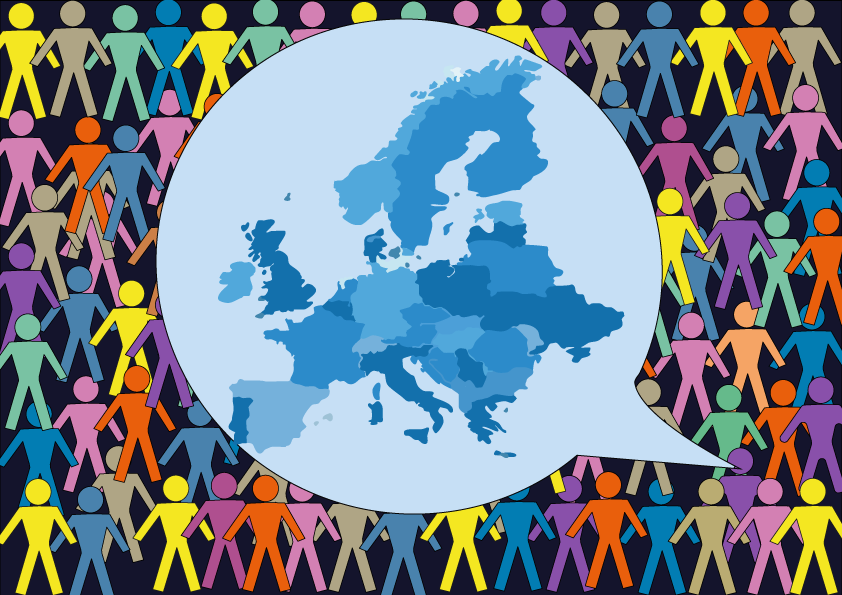
Facts on multilingualism
- Growing up multilingual is the daily routine for most children in the world.
- The European Union (EU) officially has 24 languages. However, at least 200 more are spoken throughout Europe (Undehn, 2023 — Goethe Institut).
- The goal of the EU is to establish multilingualism throughout Europe. Therefore, multilingualism is supported officially, and every citizen should speak at least 2 to three languages (European Commission 2017).
- Countries in the rest of the world have many more official and minority languages: Zimbabwe, for example, has 16 official languages. India has more than 1000 dialects and more than 100 different languages, with 23 of them being official languages (including English).
Facts for Austria:
- In 2023, 21.7% of the Austrian population were born outside of Austria. In Vienna, this number increases to 39.3% (Österreichischer Integrationsfonds, 2023).
- In 2021, 26,9 % of the pupils in Austria had a non-German family language (Österreichischer Integrationsfonds, 2023).
Facts for Germany:
- In 2017, 20,2 % of all children under six mainly did not speak German at home (Geis-Thöne, 2022).
- In 2019, only 65,3 % of 3-4-year-old children from families with less knowledge of the school language visited a kindergarten (Geis-Thöne, 2022).
- In 2022, 21 % of all children under 14 spoke more than one language at home in Germany (Geis-Thöne, 2022).
- 15 % of households use German alongside other languages or no German as a family language (Destatis, 2022).
- Turkish, Russian, Arabic, Polish, and English are the most spoken languages besides German (Destatis, 2022).
Facts for Lithuania:
- Most people in Lithuania are bilingual or multilingual—90% can speak and understand more than one language. The most common foreign languages are Russian (around 86% of non-native speakers can speak it) and English (70% of the population in Lithuania can speak it). However, this situation is changing: the number of people who can speak Russian is getting smaller, and more and more people speak English nowadays.
- For many years, most immigrants were returning Lithuanian citizens (82%); since 2022, most new immigrants are non-EU citizens (84%).
- About 6% of the Lithuanian population was born outside Lithuania. At the beginning of 2022, Lithuanians accounted for 85.1% of the country's permanent population, Poles - 6.6%, Russians - 5.1% and others - 3.2%. The majority of people of non-Lithuanian nationality have a family language other than Lithuanian.
- In 2022-2023, almost 10.6% of the school children attended non-Lithuanian secondary schools (but instead Russian, Polish or other), where some encountered Lithuanian as a state language for the first time.
- However, some families of non-Lithuanian nationalities, both Lithuanian minorities and recent immigrants, choose to educate their children in Lithuanian schools. Lithuanian migrant families who are re-migrating to Lithuania also send their children to Lithuanian schools. The Lithuanian language proficiency level of these children varies greatly.
Facts for Poland:
- Until recently, Poland was mainly a monolingual country. This gradually changed after joining the EU in 2004 due to migration in and out of the country and mixed marriages. Additionally, the rights of ethnic minorities have been acknowledged.
- There has been a steady increase in the number of learners from migrant and multilingual families in the school setting, from 9610 in 2009 to 51363 in 2019 (NIK, 2020). These numbers also include children from Polish migrant families returning to Poland.
- Since 2022, 1879,000 Ukrainian refugee learners have been admitted to Polish schools and kindergartens. (samorzad.infor.pl, 2023).
- The most spoken languages besides Polish are Ukrainian, Belarussian, German, Russian and Vietnamese (GUS [Main Statistical Office], 2020).
Facts for Slovenia:
- In 2023, 9 % of pupils in Slovenia were born outside of Slovenia.
- The most common home languages besides Slovenian are Serbo-Croatian, Albanian, Macedonian, Hungarian and Italian.
Literature
- De Houwer, A. (2015). Integration und Interkulturalität in Kindertagesstätten und in Kindergärten: Die Rolle der Umgebungssprache für das Wohlbefinden von Kleinkindern. In: E. Reichert-Garschhammer, C. Kieferle, M. Wertfein & F. Becker-Stoll (Hrsg.): Inklusion und Partizipation – Vielfalt als Chance und Anspruch (S. 113-125). Göttingen: Vandenboeck & Ruprecht.
- Dintsioudi, A., Krankenhagen, J. (2020). Mehrsprachigkeit in der KiTa von Anfang an gut begleiten. nifbe-Beiträge zur Professionalisierung Nr. 12. Osnabrück: nifbe.
- Feierabend, S., Plankenhorn, T. & Rathgeb, T. (2015). miniKIM 2014. Kleinkinder und Medien. Basisuntersuchung zum Medienumgang 2- bis 5-Jähriger in Deutschland. Stuttgart: Medien pädagogischer Forschungsverbund Südwest.
- Panagiotopoulou, A. (2016). Mehrsprachigkeit in der Kindheit. Perspektiven für die frühpädagogische Praxis. In: Deutsches Jugendinstitut e.V. (Hrsg.): Weiterbildungsinitiative Frühpädagogische Fachkräfte (Wiff-Expertise Nr. 46). München: DJI.
- Tracy, R. (2008). Wie Kinder Sprache lernen. Und wie wir sie dabei unterstützen können. Tübingen: Narr Francke Attempo Verlag.
- Woerfel, T. (2022). Mehrsprachigkeit in Kita und Schule. Köln: Mercator-Institut für Sprachförderung und Deutsch als Zweitsprache.
- Bialystock, E. (2001). Bilingualism in development: Language, literacy and cognition. New York, NJ: Cambridge University Press.
- Bialystock, E., Majumber, S. & Martin, M.M. (2003): Developing phonological awareness: Is there a bilingual advantage? Applied Psycholinguistics, 24(1), 27-44.
- Byers-Heinlein, K., Burns T.C. & Werker, J.F. (2010). The Roots of Bilingualism in Newborns. Psychological Science, 21(3), 343-348.
- Garcia, O. (2009). Bilingual education in the 21st century: A global perspective. West Sussex, UK: Wiley- Blackwell.
- Gogolin, I. (2012). First language and second language learning. In: J.A. Banks (Ed.): The Encyclopedia of Diversity in Education (p. 915- 918). Thousand Oaks, CA & London: Sage Publication.
- Mampe, B., Friederici, A.D., Christophe, A. & Wermke, K. (2009). Newborn's cry melody is shaped by their native language. Current Biology, 19(23), 1994-1997.
- Zurer Pearson, B. (2008). Raising a bilingual child. A step-by-step guide for parents. NY: Living Language.